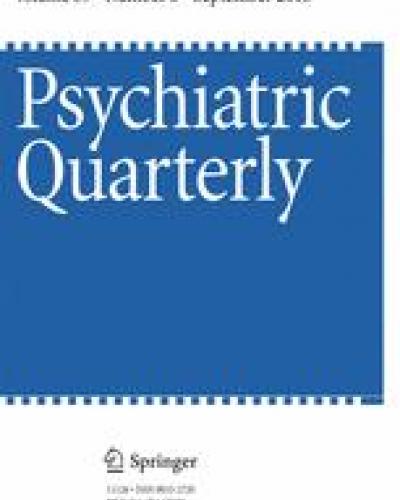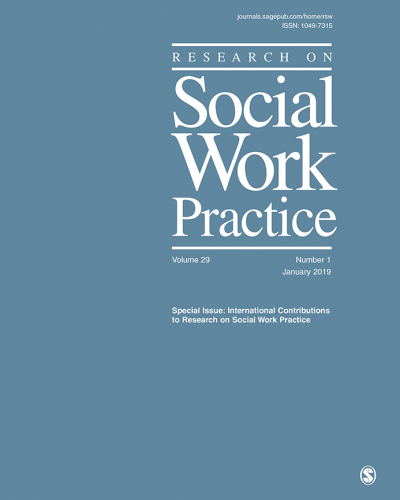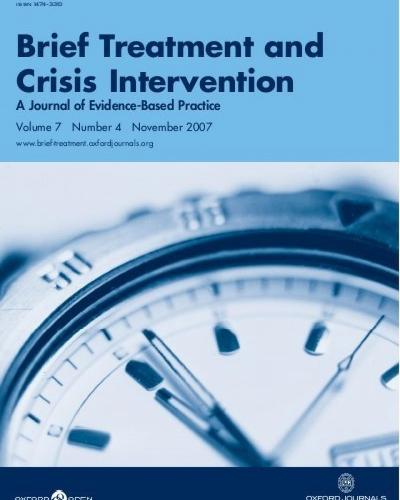
Pathways to Recidivism for women released from prison:A Mediated model
Published:
| Author: Stephen Tripodi, Carrie Pettus-Davis, Kimberly Bender, Michael Fitzgerald, Tanya Renn, Stephanie Kennedy
Findings showed no direct relationship between childhood trauma and reincarceration for women in the sample, although there was a significant mediated relationship from childhood trauma to depression to reincarceration. Results suggest the importance of addressing incarcerated women’s trauma before release, assessing for depression, and using empirically-supported interventions to treat depression when applicable.
Category: Incarcerated Women, Reentry

Effects of personality disorder and impulsivity on emotional adaptations in prison among women offenders.
Published:
| Author: Senik Mahmood, Stephen Tripodi, Michael Vaughn, Kimberly Bender, Rachel Schwartz
The present study sought to better understand the influence of personality disorders and impulsivity on women's ability to adapt to incarceration. We analyzed the influence of personality disorders as screened with the structured clinical interview for personality disorders, and impulsivity as assessed with the Barratt impulsivity scale on depression and anxiety, sleeping problems, and feeling afraid of being attacked in prison among a large sample of women incarcerated in a Virginia prison.
Category: Mental Health, Incarcerated Women

Effects of Correctional-Based Programs for Female Inmates: A Systematic Review
Published:
| Author: Stephen Tripodi, Sarah E. Bledsoe, Johnny S. Kim, Kimberly Bender
Objective: To examine the effectiveness of interventions for incarcerated women. Method: The researchers use a two-model system: the risk-reduction model for studies analyzing interventions to reduce recidivism rates, and the enhancement model for studies that target psychological and physical well-being. Results: Incarcerated women who participate in substance abuse interventions appear less likely to reoffend than those who do not participate. Enhancement model studies report mixed results.
Category: Incarcerated Women, In-Prison Intervention

Substance Abuse Treatment for Juvenile Offenders: A Review of Quasi-Experimental and Experimental Research
Published:
| Author: Stephen Tripodi, Kimberly Bender
This paper presents the results of a systematic review of the research literature to assess the effectiveness of substance abuse treatment programs for alcohol and marijuana use by juvenile offenders. The literature and database search generated five experimental or quasi-experimental studies that assessed alcohol outcomes for juvenile offenders and five experimental or quasi-experimental studies that assessed marijuana outcomes for juvenile offenders. Implications for future research are discussed.
Category: Substance Use, Juvenile Offenders


Is Employment Associated With Reduced Recidivism?: The Complex Relationship Between Employment and Crime
Published:
| Author: Stephen Tripodi, Johnny S. Kim, Kimberly Bender
This article explores the association between employment and recidivism for parolees released from Texas prisons. Along with determining whether obtaining employment on release from prison is associated with decreased odds of reincarceration, this article analyzes whether obtaining employment is associated with increased time to reincarceration. Proportional hazard models were used to examine the effect of employment on reincarceration over time. This analysis allowed a unique view of desistance from crime as a process of behavioral change with multiple stages.
Category: Recidivism

Inmate suicide: Prevalence, assessment and protocols.
Published:
| Author: Stephen Tripodi, Kimberly Bender
This article describes the prevalence of suicide for incarcerated adults in detention centers, jails, and prisons; factors associated with suicide risk; methods for assessing suicide risk in this vulnerable population; and current protocols for suicide prevention programs in jails and prisons.

